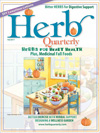Waka rules!
By Beth Lowell
If you’ve ever considered writing a waka you know there are a lot of rules. Here are some of them:
Waka:
Contains 5 lines
Follows a syllable/line pattern of 5/7/5/7/7
Contains 31 syllables
Is written so that each line can stand alone yet the group of lines creates a feeling of cohesiveness
Uses the middle line as a bridge or turning point
Uses poetic devices like simile and metaphor
Expresses emotion
I had read about the poetic form of tanka in the past but quickly dismissed it. I already knew how deceptively simple haiku look and the reality of how difficult to pull off they really are. So why would I want to try something longer and probably more difficult than a haiku? But after practicing Reiki, I discovered the waka, forerunner of the tanka, and I decided to take the plunge.
Waka literally means Japanese poem. Waka encompassed two forms, a long form, choka, and a short form, tanka. The long form fell by the wayside somewhere back in time and the tanka was what remained.
I started researching tanka to see how a really good one was written. I dissected tanka after tanka, looking closely, trying to see what lay underneath the words and structure that made them each so wonderful. But I had a problem. None of them were the same. Yes, they all followed the 5-line rule, but the syllable count was wrong. Some attempted a pattern of short/long/short/long/long, but others did not. Some were purely conversational and none of the lines stood alone. So, I decided I would go back to the source …. the Meiji Emperor.
Waka was written well before the Meiji Emperor was born but since his were the poems used for contemplation in Reiki, I used his poetry as my example. Most of the translations of the waka, which were traditionally written in one line, dutifully followed the 5/7/5/7/7 rule. But just as I had read in English tanka, some of the waka were conversational, and the translations often didn’t contain a bridging line.
When I read the phonetic version of the Japanese, I broke the words down into syllables as best I could, and indeed most waka contained 31 syllables, although some contained fewer. In delving deeper, things became even more confusing when I learned that Japanese language uses what is called a mora as a sound measurement, which is not equal to the syllable that we use in English. In Japanese, the word “cat” has two mora, where in English it contains only one syllable. Further, when I looked at one Japanese phonetic version and the English translation, the waka grew from one Japanese line into a small English Paragraph:
Ten wo urami hito wo togamuru kotomo araji waga ayamachi wo omoikaesaba
I have consecutive unhappiness and pain that I cannot control. Easy to think that there is no God, I tend to think that the other person is to blame for it. Is this really blamed on other person? Am I always right without any fault? No, I can remember that I also have many faults. This is blamed on me, I know that this is the result I bring, and now I am free from ill feeling.
This was all interesting but it wasn’t helping me get any closer to the answer I was looking for. Back to the present I returned for a second look into tanka. My hunch about all these rules was confirmed in a series of articles on the ‘Aha’ poetry website. Rules for tanka writing were created to help English writers achieve the sound and emotional quality of a Japanese poem. The challenge lies in the differences between both culture and language.
In an article called “Five Years of Tanka History in America,” Editor Jane Reichhold described her surprise when reading the differences in tankas submitted for an annual contest as the years passed. What she discovered was a beautiful parallel to the practice of Reiki. The rules were like mantras and symbols – tools; the training wheels for writers to begin to get into the tanka space. As their confidence and ability grew, they discarded the rules and were able to continue to create better and better work.
What made each of the tanka I researched so beautiful was not in the adherence to form or rules, but in the individual voice and purity of intention of each writer. So most rules aside, if it’s five lines, under 31 syllables and comes from the heart – it’s a waka!
Here’s an open invitation to all readers to try their hand at a waka/tanka, either following the traditionally established rules for English writers, or not, and submit it in the comments section – go ahead, it’s fun!
For examples of some modern tanka, visit:
http://www.tankasocietyofamerica.com/
http://www.ahapoetry.com/index.html
































1 Comments:
I have dreamed of writing waka, I will have to start working on training myself.
Post a Comment
<< Home